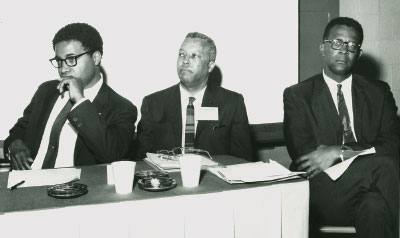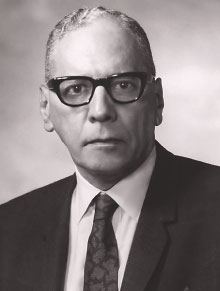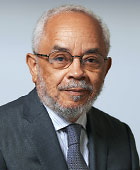The year 2019 marks important birthdays for the American Psychiatric Association (APA) and the Black Psychiatrists of America (BPA). Both organizations are celebrating long years of building community among their members—175 for APA and 50 for the BPA. It was in 1844 that 13 of 20 medical superintendents of mental institutions assembled at the Jones Hotel in Philadelphia. Their objective was to discuss matters related to their work and to learn from each other about caring for people with mental illness. The Association of Medical Superintendents of American Institutions for the Insane, which developed from that historic encounter, evolved over the next 175 years into what is presently our APA.
Walter Barton, M.D., wrote an elaborate and informative text, published in 1987 by the American Psychiatric Press (The History and Influence of the American Psychiatric Association), describing APA’s progressive development. Barton’s tale is fascinating. He outlined the major factors in the United States that influenced the growth of the organization. These factors included the increase in the number of psychiatric hospitals (their construction started in 1773), the expansion of medical schools (the first was established in 1765), legislation affecting physician practice (started in the 1760s), activism on the part of lobbyists and crusaders such as Dorothea Dix (undertaken between 1840 and 1870) on behalf of psychiatric patients, the enactment of the 13th and 14th Amendments to the U. S. Constitution (1860s), advances in science and public health, and World Wars I and II.
According to Barton, the APA membership had grown during all this interaction and by 1944 had reached almost 4,000 psychiatrists. Despite his impressive analysis of factors influencing APA’s development, he paid little attention to the race question in the country. However, he did acknowledge that the civil rights movement of the 20th century had some effect on professional organizations.
The BPA was founded in 1969 out of black APA members’ dissatisfaction with the APA and its cynically unconcerned attitude toward blacks. A group of blacks in APA, militantly forward looking and tired of being invisible in an Ellison sort of way, took the veil off the story. Their contribution was to recount how medical organizations like APA had stood by and witnessed the demeaning treatment that whites meted out to blacks during the 19th and 20th centuries. In the July 1921 issue of the American Journal of Psychiatry, W. M. Bevis explained that after citizenship was given to the Negro, the group was unprepared for the privilege, because of being poorly prepared intellectually. However, Negroes were expert imitators, and by copying whites, they could give the impression of being just slightly inferior to whites. Bevis also described the slowing up of healthy Negroes’ mental development once they reached puberty. At that point, Bevis claimed, they became preoccupied with sexual promiscuity, gambling, petty thievery, drinking, and loafing. This brief reference should suffice to make clear how our specialty had articulated the “body-geography” of blacks in the early part of the 20th century—the artful use of blacks’ appearance, thinking, and behavior to assign them their place in the community, consistently below the dominant white group.
For decades, organized medicine has seemed taken with the task of linking the physical and mental characteristics of blacks to views that would rationally buttress their inferior place in white organizations. This practice is in line with the occasional story that I have heard bruited about—for instance, stories of black medical trainees’ being accused of using drugs because they looked “distant” and ”spaced out,” even though there was no objective evidence available to sustain the accusations, and of white medical faculty accusing black doctors of questionable conduct based solely on the belief that the claims seem concordant with the blacks’ personalities.
Robert Baker and colleagues reminded us that the AMA was first organized around 1849 and reorganized in 1874 to become a state-based federation (“African American Physicians and Organized Medicine, 1846-1968, Origins of a Racial Divide,” JAMA, July 8, 2008). The state federations developed their own membership criteria. This allowed the AMA to avoid problems stemming from race, even though its code of ethics prohibited exclusionary conduct based on race or gender. The 1868 debate in the AMA, according to Baker in another article (“The American Medical Association and Race,” AMA Journal of Ethics, June 2014), ended with the conclusion that problems of admission to the AMA related to race or gender should be left to the local societies. This discriminatory decision was taken with full cognizance of the fact that many state societies were racially exclusive.
The AMA reaffirmed this stance in 1874. In response, local black medical societies formed the National Medical Association (NMA) in 1895. Baker and colleagues suggested that lack of contact with the AMA resulted in blacks’ professional isolation, fewer referrals, and limitations in income and in training. Furthermore, Baker noted that as recently as 1968, the AMA reconfirmed this policy of discrimination. (In 2008 the AMA apologized formally to the NMA and pledged to correct the injustices done to black physicians, their families, and their patients.)
The first half of the 20th century in the United States was a period of significant hardship for blacks. Racial discrimination was pervasive and touched most institutions in this country, whether because of law or convention. Indeed, it prompted blacks to flee the South and seek a better living in other parts of the country where racialized social and economic structures were less pernicious.
The APA Archives has a May 1972 account of an informal discussion with Charles Prudhomme, M.D., about life in the 1950s and 1960s for a black psychiatrist. He recounted growing up in Kansas City, Mo., where he attended a segregated high school. He then matriculated at a nearby college and was bothered by not being permitted to swim in a segregated pool. Subsequently, he switched colleges and registered in 1925 at Howard University in Washington, DC., where, in 1935, he also completed his medical studies. He then served an internship at the nearby general hospital and experienced serious problems obtaining advanced training. It took him 11 years to be accepted for psychoanalytic training, and he became a member of a psychoanalytic institute in 1958. He pointed out APA’s unwillingness to engage in solving the race problems of black physicians in the 1950s and 1960s. The Group for the Advancement of Psychiatry (GAP) appArently stayed equally neutral.
Prudhomme stated that he had been a member of APA for more than 30 years and had had little opportunity to express himself at meetings or to serve on a committee. After the BPA was formed in 1969, a group of black APA members presented a list of demands to the leadership. Prudhomme explained that one of the grievances was a lack of participatory membership. The leadership responded by drawing up a list of black APA members from which Prudhomme was chosen to be a candidate for vice president. He served in that post from 1970 to 1971. This event signaled the emergence of the BPA as a professional organization that could catalyze change, not only in the racial climate of APA, but also in the practice and culture of American psychiatry and American medicine. The black members’ provocative complaints made clear that APA, despite all its achievements external to the organization, had ignored the task of building community internally to include black members.
In the introduction to an essay published in 1975 (“The Ghetto: An Extreme Sleep Environment,” Journal of the National Medical Association, March 1975), Chester Pierce, M.D., the first BPA president, lamented that he could name only three young black psychiatrists who dedicated significant time to research. He urged more black people to get into research careers, to pursue the task of describing what it means to be black, and to display “particular sensitivity to all nuances of group behavior.” Pierce understood well that the struggle for the BPA was broader and more complex than improving blacks’ status in APA.
Were Pierce alive today, he would be pleased to note that regarding race and psychiatry in the United States, the situation has changed. The BPA and APA are now working together to improve the racial climate in APA. Altha Stewart, M.D., APA’s first black president; the CEOs and medical directors of both organizations—Saul Levin, M.D., M.P.A., and Patricia Newton, M.D., M.P.H., M.A., respectively; Board members and Black Caucus leaders; and RFM and ECP leadership have taken seriously the task of implementing racial and gender diversity within APA. They also see that diversity is different from inclusion. Here, I am reminded of Langston Hughes’ image of the “welcome table.” Inclusion can be realized only if all members of the organization come to believe that they may have representation at the table.
In 1969, black APA members lacked this belief. In a recent text (Belonging, Therapeutic Landscapes, and Networks, Routledge, 2018), I suggested that “[i]t is possible to see many professional organizations as landscapes engaged in structuring community both within and outside the organization.” I have been advocating that members of professional organizations ask whether their actions contribute to enhancing the dignity of the other. When we survey the landscape, are we encouraging a sense of belonging and cultivating networks? It’s a question that has substantial relevance for APA and the BPA. In my view, the future of American psychiatry, as well as of APA and the BPA, will depend on a mutual recognition of whites’ and blacks’ common humanity. ■



